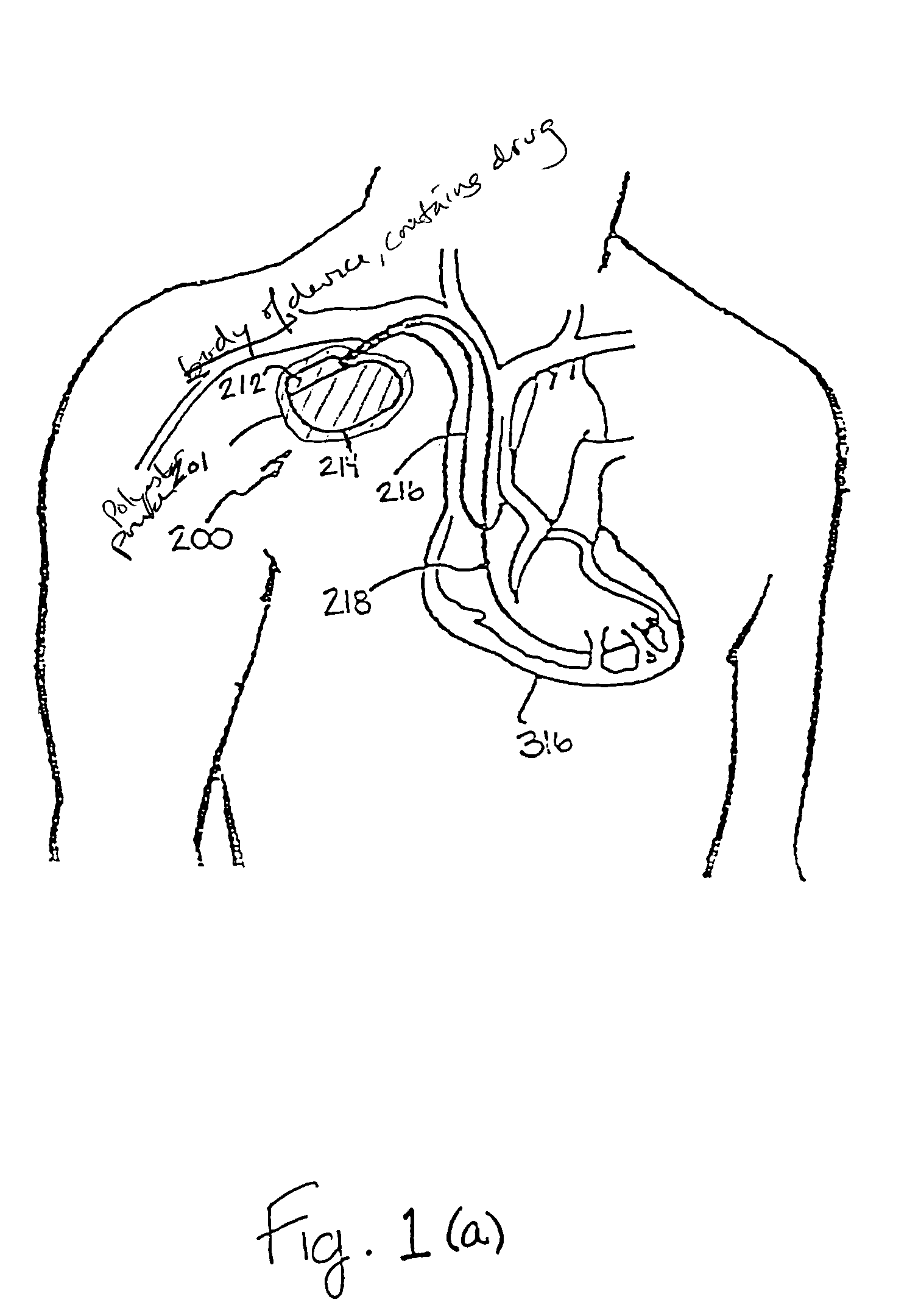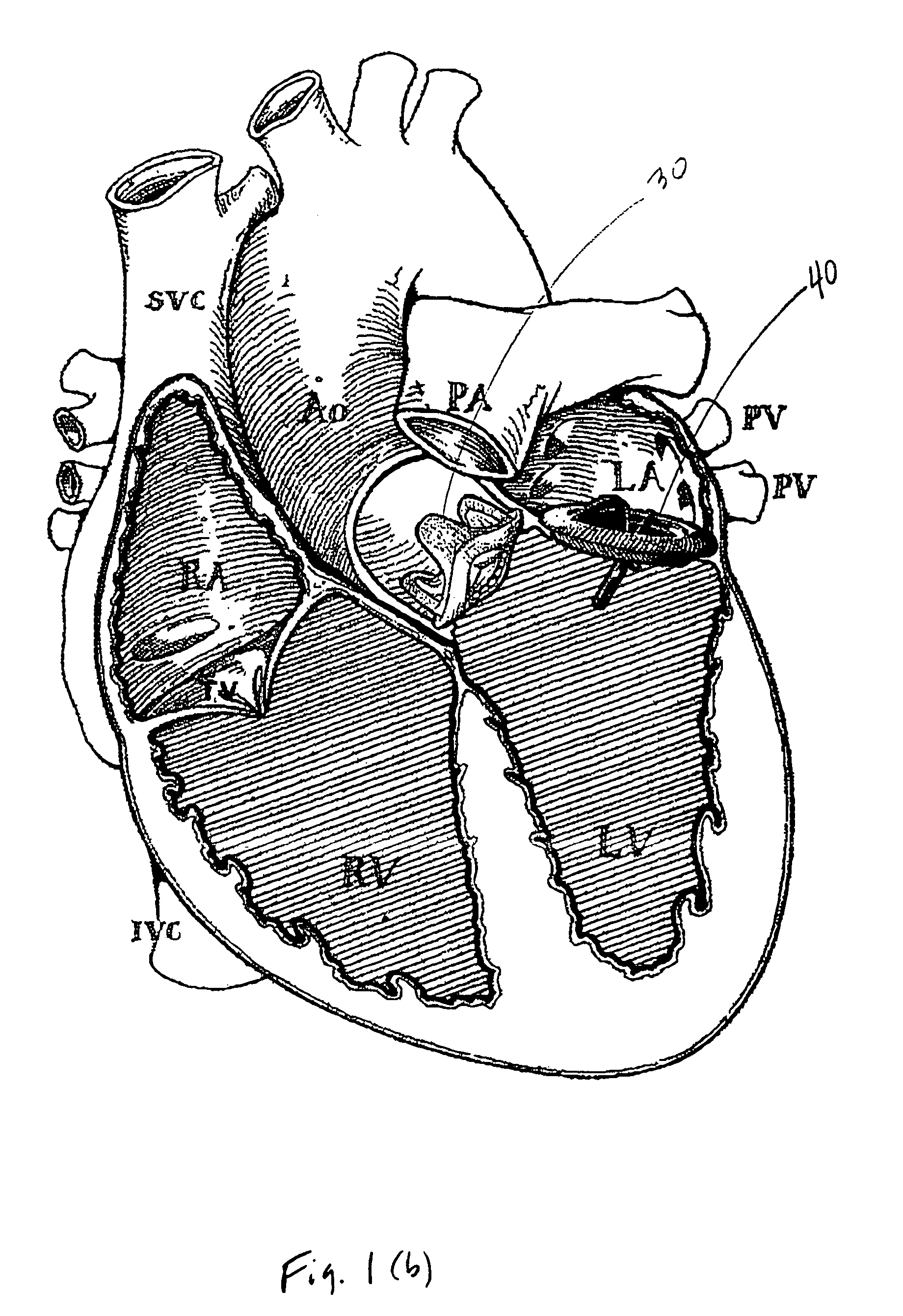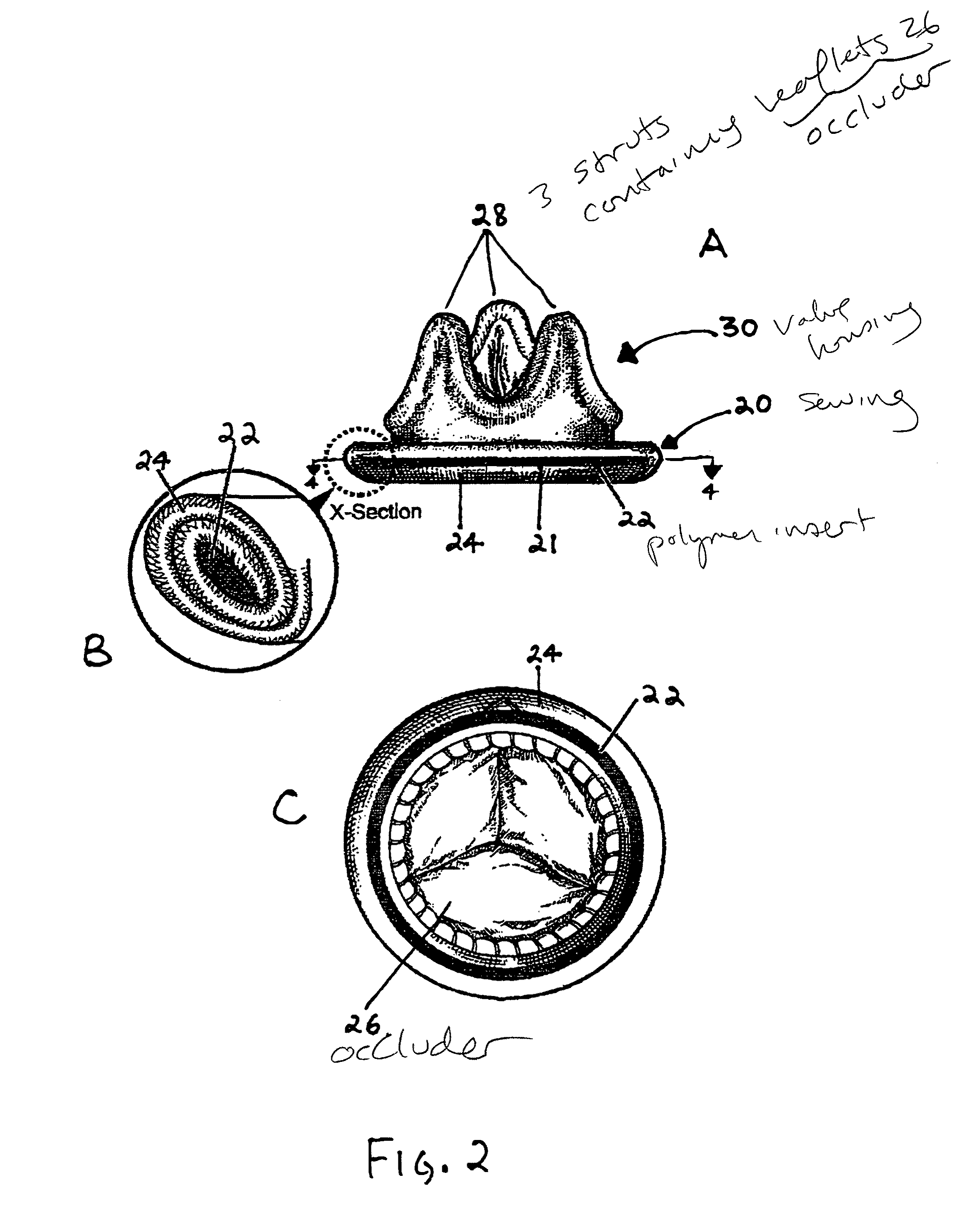Implantable medical device with enhanced biocompatibility and biostability
a medical device and biocompatibility technology, applied in the field of medical implantable medical devices, can solve the problems of enlargement of the valve annulus, incompetence or stenotic of the valve, damage to the valve and/or the subvalvular apparatus, etc., to enhance the biocompatibility of the material, reduce acute inflammation, and enhance the biocompatibility. effect of the material
- Summary
- Abstract
- Description
- Claims
- Application Information
AI Technical Summary
Benefits of technology
Problems solved by technology
Method used
Image
Examples
example 1
In vitro Biological Oxidation and Environmental Stress Cracking in Polyetherurethane
A. Materials and Methods
1. Cell Isolation
[0086]Human and rabbit blood was used as sources of the cells in these experiments. Blood was anticoagulated with 2 units / ml sodium heparin (Upjohn Co., Kalamazoo, MI). Mononuclear cells (lymphocytes, monocytes) were isolated within 15 minutes by a one-step density gradient centrifugation procedure using Isopaque-1077 (a density gradient solution) according to a modified Boyum's method (Boyum et al., Blood Separation and Plasma Fractionation, 217-239, Wiley-Liss, Inc. (1991)). The mononuclear cells were harvested and washed twice with cold Hanks balanced salt solution (HBSS) without Ca2+ and Mg2+ to minimize cell aggregation. The cells were then resuspended in standard media (RPMI-1640, 10% Fetal bovine serum, 0.2M L-glutamine, 10 Ul / ml Penicillin-G, and 0.1 mg / ml Streptomycin). The cell suspension was seeded into several plastic tissue culture flasks and incu...
example 2
In Vitro Modulation of Macrophage Phenotype on Dexamethasone-Loaded Polymer and its Effect on Polymer Stability in a Human Macrophage / Fe / Stress System
A. Materials and Methods
1. Test cell line; human monocyte-derived macrophages (Mo / MØ)
[0099]The in vitro method used is described in Example 1. Human venous blood was used as the source of cells, which were isolated as described in Example 1.
2. Test Materials
[0100]Dexamethasone-Loaded “PELLETHANE” 80A (DEX / Pe80AS). To prepare these materials, before extrusion, “PELLETHANE” 80A (Pe 80A, commercially available from Dow Chemical, Midland, MI) was extracted for 24 hours in a Soxhlett extractor using acetone. The purpose of this process was the removal of antioxidant from the polymer. After extraction, the material was dried under vacuum at 50° C. for 4 days. Dexamethasone USP Micronized BP / EP (Lot 78AFT, Upjohn Co.) was vacuum dried overnight at 40° C. In order to prepare materials with different dexamethasone (DEX) concentrations, the rati...
example 3
In vivo Biostability of Dexamethasone / Polymer Coatings in an Accelerated Test Model
A. Materials and Methods
1. Biostability Sample Configuration
[0121]Each biostability sample consisted of a piece of coated test tubing or control tubing strained to 400% elongation. Polysulfone mandrels were used to support the strained tubing. A 2-0 Ticron suture was used to sustain the strain of the tubing samples over the mandrels. The implant material strands consisted of five samples made specifically for test or control conditions. Each rabbit was implanted in the subcutaneous tissue of their backs with four, 5-sample strands. Each strand was identified by an attached glass bead whose color was coded to reflect the coating / control condition. The implant material strands measured approximately 0.3 cm in diameter and 7.0 cm in length. A total of 120 samples from 6 conditions were implanted in 6 rabbits, 20 per animal and 5 from each condition.
2. Test Coatings
[0122]Several formulations of DEX / Pe80A ...
PUM
| Property | Measurement | Unit |
|---|---|---|
| thick | aaaaa | aaaaa |
| thick | aaaaa | aaaaa |
| diameter | aaaaa | aaaaa |
Abstract
Description
Claims
Application Information
 Login to View More
Login to View More - R&D
- Intellectual Property
- Life Sciences
- Materials
- Tech Scout
- Unparalleled Data Quality
- Higher Quality Content
- 60% Fewer Hallucinations
Browse by: Latest US Patents, China's latest patents, Technical Efficacy Thesaurus, Application Domain, Technology Topic, Popular Technical Reports.
© 2025 PatSnap. All rights reserved.Legal|Privacy policy|Modern Slavery Act Transparency Statement|Sitemap|About US| Contact US: help@patsnap.com



